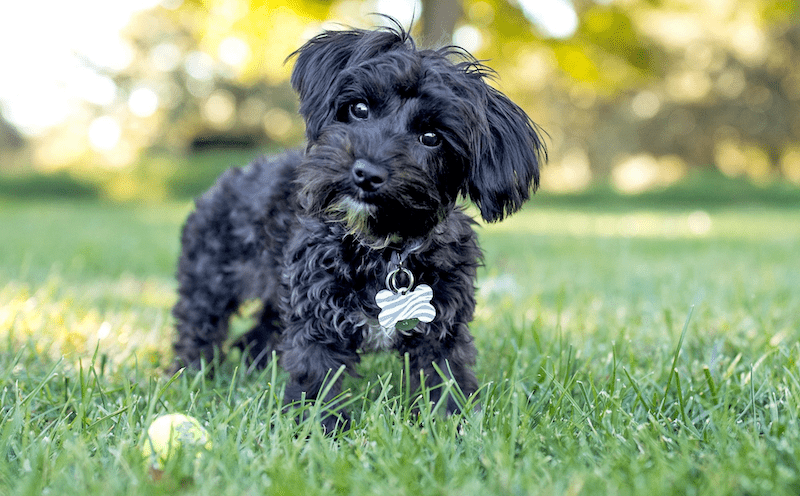FAQ's
Dog Carrier FAQ’s

How Big Should A Dog Carrier Be?
The best way to ensure your dog is comfortable when travelling is by getting them in a carrier that’s just right for size.
A too-small travel crate will be uncomfortable, noisy and stressful, while one too big can cause injury or excessive strain on muscles from turning around constantly inside the carrier.
Your dog should be able to turn around easily inside the carrier.
To ensure the carrier is the right size, measure the length and height of your dog and add roughly 8cms to both the dogs length and height.
Our carrier measures H32cm x W34cm x L50cm, ideal for puppies or very small breeds.
Can You Put Two Dogs in One Carrier?
Two dogs can be travelling in one carrier if they both have enough room to turn around.
You should avoid placing two adult dogs together as it may cause problems due their size difference and/or aggressiveness towards each other.
When small puppies are together in the cage, keeping journeys short is a safe option to avoid common issues.
Ensure to check with airlines for dog carrier rules if travelling by air.
How Long Can Dogs Stay In The Carrier?
If you have checked the carrier sizing, and your furry friend will fit in the small carrier, then up to 6 hours or 8 at most should be perfectly fine and safe for your dog.
It is important to keep checking on your pet to ensure they are both comfortable and safe.
If the trip is longer than that, it is best to let them out every hour for food, water & exercise while checking inside temperature from time-to -time too!
How To Get A Dog In A Pet Carrier?
If you’re planning to take your dog in for a visit at the vet, then it’s important that they are not afraid of going into their carrier.
You can help avoid this by following these simple tips before arriving:
- Clean and dry off any surfaces where there may still be smells, if possible without using strong disinfectants which could cause anxiety instead opt for pheromone sprays such as Feliway.
- Place the carrier with door open near the dogs food dishes. Once your puppy is comfortable eating around the carrier try moving the food dish inside the carrier.
- Leave your dog’s favourite blanket and some treats inside the carrier to entice your puppy in.
The more comfortable your pup is around the carrier the easier the job will be. If your pup is still refusing to enter the carrier then follow these steps:
- Sit the carrier with the open door pointing up to the ceiling.
- Wrap a towel around the dog. Hold the dog firmly enough to prevent escape but not so firm as to restrict breathing and quickly place the dog and towel inside the carrier.
- Close the door—you don’t need to remove the towel.
Some dogs will adapt more easily to travel but for most pups it is a stressful experience.
With your pup now in the carrier, take it for a short drive from time to time to get it used to the experience.
Do Dogs Like Backpack Carriers?
Some dogs absolutely love being in backpack carriers, while others may not be as fond of them.
The general idea is that most dogs feel more secure and safe when they are enclosed in a small space, which is why many dog owners opt to use backpack carriers.
If you’re thinking of using a backpack carrier for your dog, it’s important to do a little bit of research beforehand to make sure that you choose the right type of carrier for your pet.
Not all dogs will enjoy being in a backpack carrier, so it’s always best to start with something small and see how your dog reacts.
Many pet stores offer a variety of different types of carriers, so it should be easy to find one that fits both you and your pup.
Are Pet Carriers Good For Dogs?
There is no one-size-fits-all answer to this question, as the best dog carrier for your pet will vary depending on the individual dog’s breed, size, and personality. However, generally speaking, dog carriers can be a helpful tool for safe transport of dogs.
Some benefits of using a dog carrier include:
- Prevents dogs from jumping out of cars or running into traffic.
- Keeps dogs from getting lost or stolen while at dog parks or on walks with their owners.
- Enables owners to take their dog with them on hikes or long walks comfortably.
- Keeps dogs safe and secure during dog airline travel.
- Dog carriers can help keep dog owners prepared for dog emergencies such as dog illness, injury, or if the dog gets lost.
How To Get My Dog Used To Being In A Dog Carrier?
It’s important to start getting your dog used to a carrier as early as possible, preferably when they’re still a puppy.
Here are a few tips on how to do that:
- Make the carrier part of your dog’s everyday life. Leave it out in the open so your dog can explore and get comfortable with being near it.
- Feed and water your dog near the carrier, and put their food bowl inside so they associate positive things with it.
- Start by putting your dog in the carrier for short periods of time – maybe just for a minute or two at first. Gradually increase the amount of time they spend in there until they’re comfortable staying in for longer periods.


